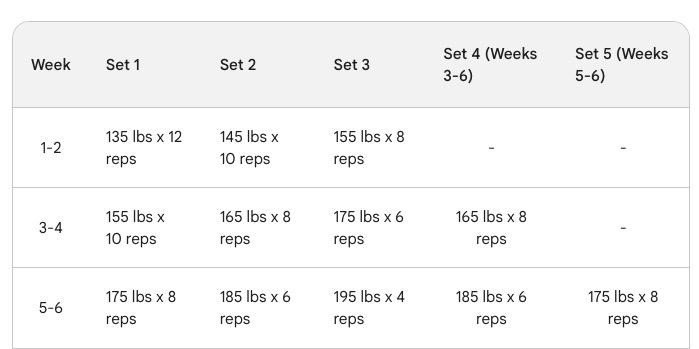When it comes to building muscle and strength, there’s one training principle you absolutely need in your arsenal: progressive overload. It’s the cornerstone of effective workouts and the key to unlocking continuous gains in size and strength. This comprehensive guide will break down exactly what progressive overload is, why it’s crucial for your gains, and how you can implement it to achieve your fitness goals faster.
What is Progressive Overload?
In simple terms, progressive overload is the practice of gradually increasing the demands placed on your muscles during workouts. This could mean lifting heavier weights, performing more repetitions, or even tweaking your technique for greater efficiency. The idea is to constantly challenge your muscles, forcing them to adapt and grow stronger over time. Think of it as a way of “leveling up” your workouts.
Why Progressive Overload is the Holy Grail of Muscle Growth
So, why is progressive overload so crucial for guys looking to build muscle and strength? Let’s dive into the reasons:
- Plateaus Become a Thing of the Past: Without progressively increasing the intensity of your workouts, your body will adapt to the existing load, and your progress will stall. Progressive overload is the antidote to plateaus, ensuring your muscles are always being pushed to their limits.
- Maximize Muscle Growth: When you consistently challenge your muscles, you trigger a process called muscle hypertrophy. This is where your muscle fibers increase in size, leading to bigger, stronger muscles.
- Build Functional Strength: Gradually lifting heavier weights translates to real-world strength gains. You’ll notice everyday activities become easier, and your athletic performance will improve.
- Enhanced Endurance: Progressive overload isn’t just about strength – it also improves muscular endurance, allowing you to perform more reps or sustain activity for longer periods.
How to Put Progressive Overload into Action

Ready to unleash the power of progressive overload? Here are some practical ways to implement it:
- Crank Up the Weight: This is the most straightforward approach. If you’re bench pressing 100 pounds for 8 reps, try adding a few pounds next time, aiming for 105 or 110. Just be sure to maintain proper form to avoid injury.
- More Reps, More Gains: Another method is to increase the number of repetitions you perform. If you can comfortably do 3 sets of 10 reps, aim for 3 sets of 12. This works especially well if you can’t increase the weight just yet.
- Pump Up the Volume: Training volume is the total amount of work done during a workout. Increase it by adding an extra set or two to your routine. For example, instead of 3 sets of squats, do 4 or 5.
- Perfect Your Form: Improving your exercise technique can be just as effective as adding weight. Focus on clean, controlled movements and a full range of motion to maximize muscle engagement.
- Shorten Rest Periods: If you normally rest for 2 minutes between sets, try cutting it down to 90 seconds. This increases the intensity and keeps your muscles working harder.
- Train More Frequently: Working a muscle group more often can also lead to progress. Just be sure to factor in adequate rest to avoid overtraining.
See Table Below with Example of 6 Week Weight and Rep Progression for Squats

This table clearly illustrates how you can progress with an exercise like squats by increasing the weight, sets, and/or reps over time. Notice how the weight gradually increases while the reps decrease as the lifter gets stronger. Remember the weights listed are just examples.
Progressive Overload Pro Tips

- Start Slowly: If you’re new to weightlifting, ease into it. Jumping into heavy weights too quickly can lead to injuries.
- Track Your Progress: Keep a workout journal or use a fitness app to monitor your lifts and reps. This helps you see your progress and adjust your plan accordingly.
- Focus on Compound Movements: Exercises like squats, deadlifts, bench presses, and pull-ups work multiple muscle groups at once, making them ideal for progressive overload.
- Rest and Recover: Muscle growth happens when you’re resting, not lifting. Prioritize sleep, nutrition, and rest days to allow your body to recover and adapt.
- Stay Consistent: The key to success is showing up and putting in the work consistently. Stick to your plan, trust the process, and watch those gains roll in.
Common Pitfalls to Avoid
- Overtraining: Pushing yourself too hard without rest can lead to injury and burnout.
- Ignoring Form: Sacrificing form for heavier weights is a recipe for disaster. Focus on proper technique to avoid injury and maximize results.
- Lack of Variety: Your muscles can adapt to the same routine, leading to plateaus. Switch things up to keep your body guessing.
- Skipping Nutrition: Proper nutrition is essential for muscle growth and recovery. Make sure you’re getting enough protein and carbs to fuel your workouts.
Sample 6-Week Progressive Overload Workout Plan

This plan is designed for beginners to intermediate lifters, focusing on compound movements that work multiple muscle groups. It progresses by increasing weight, reps, and sets over time.
Remember:
- Choose a weight that is challenging but allows you to maintain good form.
- Use a spotter for safety, especially on heavy lifts like squats and deadlifts.
- Listen to your body and rest when needed.
Weeks 1-2: Establish Your Baseline
- Monday:
- Squats: 3 sets of 8-12 reps (Start with a weight you can comfortably lift for 12 reps)
- Bench Press: 3 sets of 8-12 reps
- Bent-Over Rows: 3 sets of 8-12 reps
- Wednesday:
- Deadlifts: 1 set of 5 reps, 3 sets of 6-8 reps
- Overhead Press: 3 sets of 8-12 reps
- Pull-Ups: 3 sets to failure (assisted if needed)
- Friday:
- Leg Press: 3 sets of 10-15 reps
- Dumbbell Bench Press: 3 sets of 8-12 reps
- Lat Pulldowns: 3 sets of 10-15 reps
Weeks 3-4: Increase the Challenge
- Monday:
- Squats: 4 sets of 8-10 reps (Increase weight by 5-10% from Week 2)
- Bench Press: 4 sets of 8-10 reps
- Bent-Over Rows: 4 sets of 8-10 reps
- Wednesday:
- Deadlifts: 1 set of 5 reps, 4 sets of 6-8 reps
- Overhead Press: 4 sets of 8-10 reps
- Pull-Ups: 4 sets to failure (assisted if needed)
- Friday:
- Leg Press: 4 sets of 10-12 reps (Increase weight slightly)
- Dumbbell Bench Press: 4 sets of 8-10 reps
- Lat Pulldowns: 4 sets of 10-12 reps
Weeks 5-6: Push Your Limits
- Monday:
- Squats: 5 sets of 6-8 reps (Increase weight again)
- Bench Press: 5 sets of 6-8 reps
- Bent-Over Rows: 5 sets of 6-8 reps
- Wednesday:
- Deadlifts: 1 set of 5 reps, 5 sets of 5-6 reps
- Overhead Press: 5 sets of 6-8 reps
- Pull-Ups: 5 sets to failure (assisted if needed)
- Friday:
- Leg Press: 5 sets of 8-10 reps (Increase weight again)
- Dumbbell Bench Press: 5 sets of 6-8 reps
- Lat Pulldowns: 5 sets of 8-10 reps
Key Points and Customization
- The weights and reps listed are examples. Adjust them based on your starting strength level.
- Focus on progressive overload by increasing either weight or reps each week.
- You can replace exercises with similar movements (e.g., barbell rows instead of bent-over rows).
- Listen to your body and adjust the plan as needed.
- Prioritize proper form over heavy weight.
This is just a sample plan, and you can adapt it to your specific goals and experience level. The key is to consistently challenge yourself and track your progress to ensure continuous improvement.
Conclusion: Level Up Your Gains

Progressive overload isn’t just a buzzword; it’s a proven principle that can transform your physique and strength. By consistently challenging your muscles and gradually increasing weight, reps, sets, or intensity, you’ll unlock your full potential and achieve the results you’ve been working towards.
The Style His Life team is here to support you on your fitness journey. Sign up for our newsletter and check out our website for more healthy recipes, workout routines, and style tips to help you look and feel your best. Remember, guys – you’ve got this!









